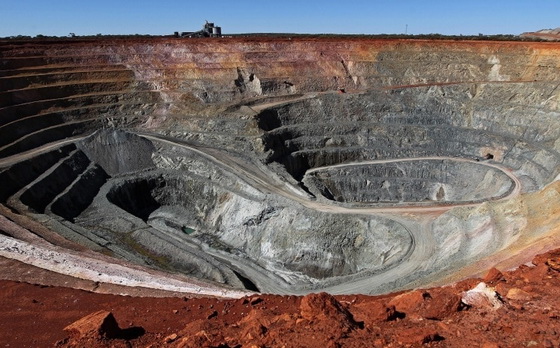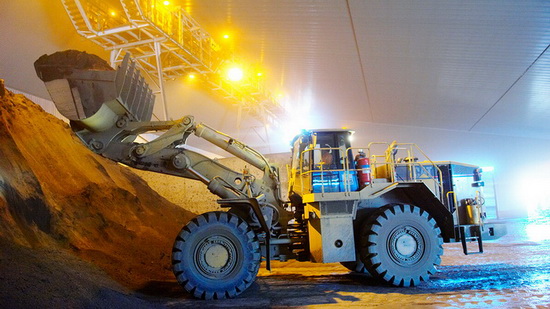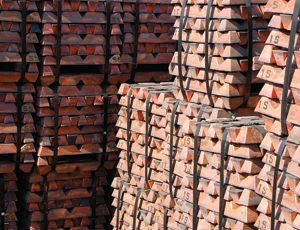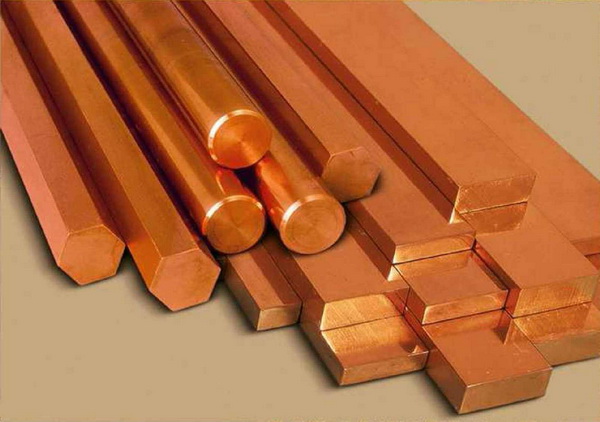We supply Copper Concentrate Copper Ingots
What is Copper Concentrate?
Copper conducts electricity and heat very well which makes the metal an essential raw material in building communities and modern economies; 65 per cent of all copper produced around the world today is used to generate and conduct electricity. It is an incredibly important metal in the transition to alternative energy sources such as solar, wind and hydroelectric that need large amounts of copper both to generate electricity and transfer it over long distances with as little energy loss as possible. The supply of copper is thus one of the most important factors for effective energy transition.
Copper is one of the few metals which may occur as an uncombined element in nature. Since it has high thermal and electrical conductivity with notable flexibility and machinability, copper has known as a base metal in today’s industry. Alloyed copper with lead, tin, aluminum, etc. possesses extremely higher mechanical properties thus meeting expansive industrial applications. Copper metal can also make homogeneous mixtures with silicon, beryllium and nickel, having diverse industrial applications.
Copper mineral naturally occurs in three different forms; sulfide, carbonate and silicate. Copper may be found in native form as well. The production process of this metal is divided into two main categories of pyrometallurgy and hydrometallurgy. Addition to production from mineral resources, recycling of copper from wastes and scraps deploys a major role for supplying the copper demands.
Significant electrical conductivity of copper together with its great flexibility and malleability has led it to deliver various uses in electrical and tooling industries. Almost 60% of total copper consumption has been assigned to power and electrical industry. According to International Copper Study Group, global consumption of refined copper in 2015 exceeded 21.7 million tons, in which China was the greatest consumer, consuming more than 10 million tons.
Worldwide supply of copper during 2013 to 2015 has been reported about 20.8, 21.8 and 22.2 million tons of refined copper.
The Copper Ingot Manufacturing Process
The process of extracting copper from copper ore varies according to the type of ore and the desired purity of the final product. Each process consists of several steps in which unwanted materials are physically or chemically removed, and the concentration of copper is progressively increased. Some of these steps are conducted at the mine site itself, while others may be conducted at separate facilities.

Copper Mining
- Most sulfide ores are taken from huge open-pit mines by drilling and blasting with explosives. In this type of mining, the material located above the ore, called the overburden, is first removed to expose the buried ore deposit. This produces an open pit that may grow to be a mile or more across. A road to allow access for equipment spirals down the interior slopes of the pit.
- The exposed ore is scooped up by large power shovels capable of loading 500-900 cubic feet (15-25 cubic meters) in a single bite. The ore is loaded into giant dump trucks, called haul trucks, and is transported up and out of the pit.

Copper Concentrating
The copper ore usually contains a large amount of dirt, clay, and a variety of non-copper bearing minerals. The first step is to remove some of this waste material. This process is called concentrating and is usually done by the flotation method.
- The ore is crushed in a series of cone crushers. A cone crusher consists of an interior grinding cone that rotates on an eccentric vertical axis inside a fixed outer cone. As the ore is fed into the top of the crusher, it is squeezed between the two cones and broken into smaller pieces.
- The crushed ore is then ground even smaller by a series of mills. First, it is mixed with water and placed in a rod mill, which consists of a large cylindrical container filled with numerous short lengths of steel rod. As the cylinder rotates on its horizontal axis, the steel rods tumble and break up the ore into pieces about 0.13 in (3 mm) in diameter. The mixture of ore and water is further broken up in two ball mills, which are like a rod mill except steel balls are used instead of rods. The slurry of finely ground ore that emerges from the final ball mill contains particles about 0.01 in (0.25 mm) in diameter.
- The slurry is mixed with various chemical reagents, which coat the copper particles. A liquid, called a frother, is also added. Pine oil or long-chain alcohol are often used as frothers. This mixture is pumped into rectangular tanks, called flotation cells, where air is injected into the slurry through the bottom of the tanks. The chemical reagents make the copper particles cling to the bubbles as they rise to the surface. The frother forms a thick layer of bubbles, which overflows the tanks and is collected in troughs. The bubbles are allowed to condense and the water is drained off. The resulting mixture, called a copper concentrate, contains about 25-35% copper along with various sulfides of copper and iron, plus smaller concentrations of gold, silver, and other materials. The remaining materials in the tank are called the gangue or tailings. They are pumped into settling ponds and allowed to dry.
The process of extracting copper from copper ore varies according to the type of ore and the desired purity of the final product. Each process consists of several steps in which unwanted materials are physically or chemically removed, and the concentration of copper is progressively increased.
Copper Smelting
Once the waste materials have been physically removed from the ore, the remaining copper concentrate must undergo several chemical reactions to remove the iron and sulfur. This process is called smelting and traditionally involves two furnaces as described below. Some modern plants utilize a single furnace, which combines both operations.
- The copper concentrate is fed into a furnace along with a silica material, called a flux. Most copper smelters utilize oxygen-enriched flash furnaces in which preheated, oxygen-enriched air is forced into the furnace to combust with fuel oil. The copper concentrate and flux melt, and collect in the bottom of the furnace. Much of the iron in the concentrate chemically combines with the flux to form a slag, which is skimmed off the surface of the molten material. Much of the sulfur in the concentrate combines with the oxygen to form sulfur dioxide, which is exhausted from the furnace as a gas and is further treated in an acid plant to produce sulfuric acid. The remaining molten material in the bottom of the furnace is called the matte. It is a mixture of copper sulfides and iron sulfides and contains about 60% copper by weight.
- The molten matte is drawn from the furnace and poured into a second furnace called a converter. Additional silica flux is added and oxygen is blown through the molten material. The chemical reactions in the converter are similar to those in the flash furnace. The silica flux reacts with the remaining iron to form a slag, and the oxygen reacts with the remaining sulfur to form sulfur dioxide. The slag may be fed back into the flash furnace to act as a flux, and the sulfur dioxide is processed through the acid plant. After the slag is removed, a final injection of oxygen removes all but a trace of sulfur. The resulting molten material is called the blister and contains about 99% copper by weight.
Copper Refining
Even though copper blister is 99% pure copper, it still contains high enough levels of sulfur, oxygen, and other impurities to hamper further refining. To remove or adjust the levels of these materials, the blister copper is first fire refined before it is sent to the final electrorefining process.
- The blister copper is heated in a refining furnace, which is similar to a converter described above. Air is blown into the molten blister to oxidize some impurities. A sodium carbonate flux may be added to remove traces of arsenic and antimony. A sample of the molten material is drawn and an experienced operator determines when the impurities have reached an acceptable level. The molten copper, which is about 99.5% pure, is then poured into molds to form large electrical anodes, which act as the positive terminals for the electrorefining process.
- Each copper anode is placed in an individual tank, or cell, made of polymer-concrete. There may be as many as 1,250 tanks in operation at one time. A sheet of copper is placed on the opposite end of the tank to act as the cathode, or negative terminal. The tanks are filled with an acidic copper sulfate solution, which acts as an electrical conductor between the anode and cathode. When an electrical current is passed through each tank, the copper is stripped off the anode and is deposited on the cathode. Most of the remaining impurities fall out of the copper sulfate solution and form a slime at the bottom of the tank. After about 9-15 days, the current is turned off and the cathodes are removed. The cathodes now weigh about 300 lb (136 kg) and are 99.95-99.99% pure copper.
- The slime that collects at the bottom of the tank contains gold, silver, selenium, and tellurium. It is collected and processed to recover these precious metals.

Copper Casting
- After refining, the copper cathodes are melted and cast into ingots, cakes, billets, or rods depending on the final application. Ingots are rectangular or trapezoidal bricks, which are remelted along with other metals to make brass and bronze products. Cakes are rectangular slabs about 8 in (20 cm) thick and up to 28 ft (8.5 m) long. They are rolled to make copper plate, strip, sheet, and foil products. Billets are cylindrical logs about 8 in (20 cm) in diameter and several feet (meters) long. They are extruded or drawn to make copper tubing and pipe. Rods have a round cross-section about 0.5 in (1.3 cm) in diameter. They are usually cast into very long lengths, which are coiled. This coiled material is then drawn down further to make copper wire.

Copper Ingot Quality Control
Because electrical applications require a very low level of impurities, copper is one of the few common metals that are refined to almost 100% purity. The process described above has been proven to produce copper of very high purity. To ensure this purity, samples are analyzed at various steps to determine whether any adjustment to the process is required.
Comments Off on Copper with 607 visit